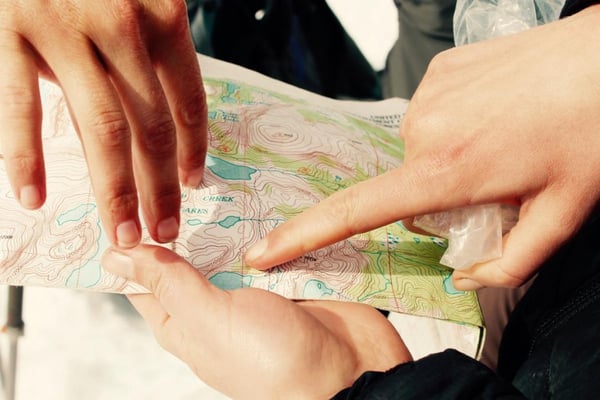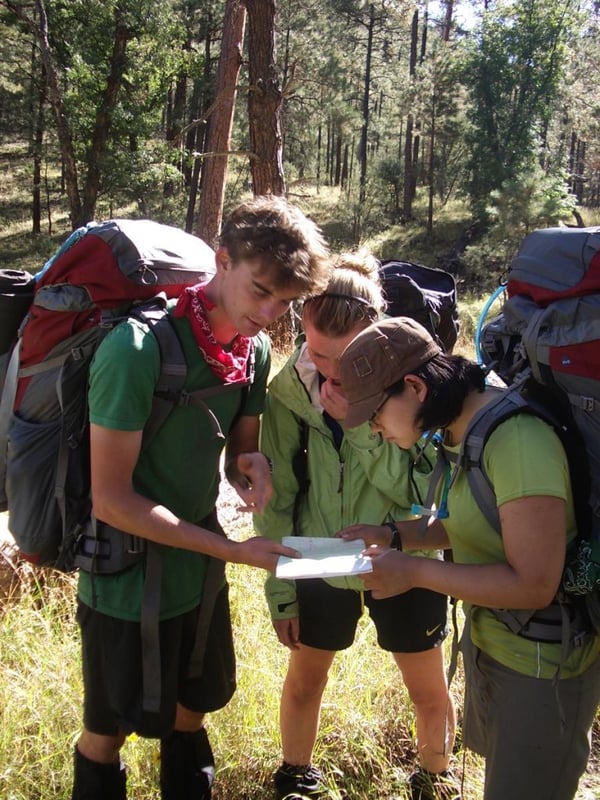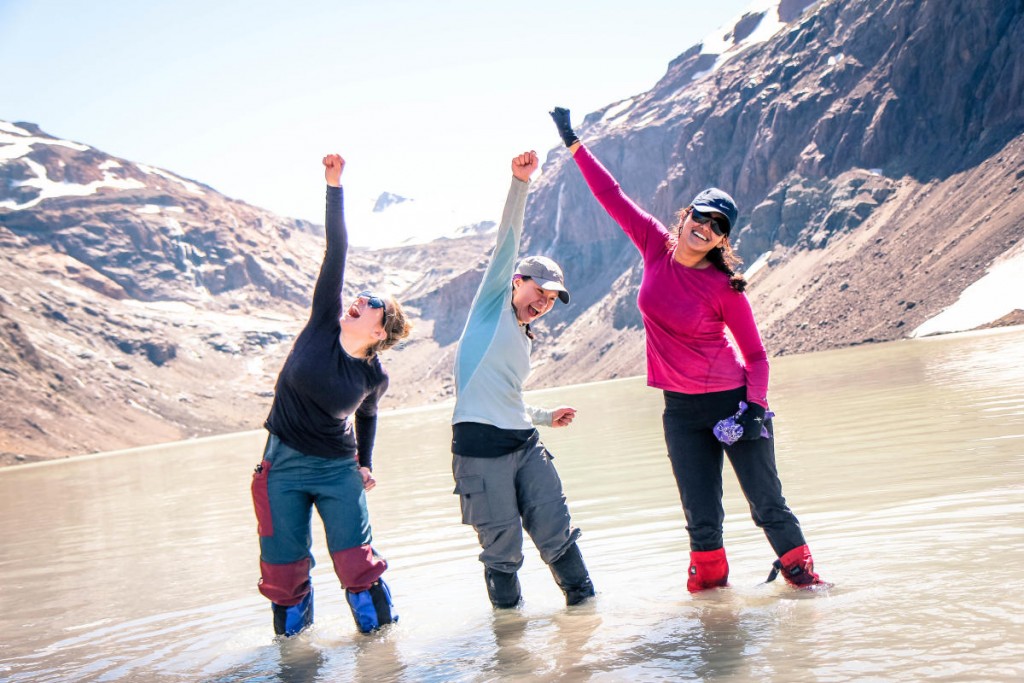What separates the best navigators from the rest is the ability to recognize when they are starting to veer off route and to know when to simply stop and turn back.
If you spend enough time in the outdoors, you’ll probably get disoriented and lost at least once in your life, whether that’s on the trails behind your house or deep within a national park. Even the best navigators can become disoriented. What separates the best navigators from the rest is the ability to recognize when they are starting to veer off route and to know when to simply stop and turn back.
Even if you’re the one holding the maps, it’s important to use your group as a resource when navigating in the wilderness. There’s no shame in asking others in your group for help, but there is in silently dragging everyone fifteen miles out of their way.
Your best defense against getting lost is to make a deliberate plan and prevent getting lost in the first place. That way, you won’t advance down the path from just being disoriented to being truly lost. You aren’t truly lost until you’ve put some effort into locating yourself and failed—if you’re not sure where you are, but you haven’t taken the time to stop and look at the map, you’re not lost, just lazy.
 Practice your map reading and navigation before you head into the backcountry. Photo by Amy Tillotson.
Practice your map reading and navigation before you head into the backcountry. Photo by Amy Tillotson.
How to Prevent Becoming Lost
- Know your navigation techniques. Don’t wait until you are five miles into the backcountry before learning to read a map and compass. Practice in city parks or near trailheads before setting out on a multi-day trip.
- Carry essential gear and extra food so that you can spend an unplanned night or two out if an emergency arises.
- For overnight trips, write a travel plan and leave it with a responsible adult. Be sure to include a detailed description of your route and return time.
- Take some time to study your route before the trip. Brief your entire group, so that everyone knows what to expect.
- Have more than one navigator in your group. What happens if the only person who knows how to read a map gets sick or injured? It’s better to be prepared.
How to Stay Found and Avoid Becoming Disoriented
- The less sure you are of your location, the slower you should move, and the more often you should check your compass and map. If you’re feeling lost, try to get back to the last place you were certain about.
- Keep everyone in your group involved in the navigation, even if they are not all “experts.” Relying on a single person to do all the navigating is usually a mistake.
- Stop and do map checks when visibility is good. Try to take breaks in areas where you have a good view so you can confirm your location.
- Look for handrails and backstops, like rivers, peaks, or trails, to ensure you are following your route.
- Keep the group together. If you have to split up, do it according to a plan, and have a contingency plan if one party doesn’t make it back.
- Don’t commit to a route unless you know you will be able to retrace your footsteps or complete the route safely. Keep asking yourself if you could really retrace your steps if you needed to. Never descend something you can’t climb back up or climb something you can’t descend unless you are absolutely sure you want to commit to the route.
- If you’ll be following the same path on the return trip, look over your shoulder on the way out to see what it will look like on the way back.
- Designated a “sweep” person whose job it is to follow along and make sure there are no stragglers drifting too far behind the rest of the hiking group.
 Involve the entire group in route finding so that everyone knows where they're going and what to look for if you start to wander off course. Photo by Nick Hall.
Involve the entire group in route finding so that everyone knows where they're going and what to look for if you start to wander off course. Photo by Nick Hall.
But What If I Really Do Get Lost?
Stop! Do not continue! Every step in the wrong direction is a step in the wrong direction. Stand still, pull out your maps, take off your pack, and think. The worst thing you can possibly do is speed ahead. Most lost people have a mental map of where they think they are, but that map is usually wrong. This is why lost people who keep moving tend to move quite far in the wrong direction.
- First, focus on finding landmarks to get your head back onto the right map rather than continue to rely on your inaccurate mental map.
- Keep yourself and your group calm, or you will waste valuable energy that could be used to determine your location.
- Consider retracing your steps. What is the last point at which you knew exactly where you were? How long has it been since you were there? What direction have you been traveling to get to where you are? Can you safely reverse your course?
- If you can retrace your steps with certainty to the last place where you knew your location or where you saw the group (if you become separated), then do so. Mark your trail with sticks or rocks.
- If you can't retrace your steps, sit tight until you have a plan or until a third party is able to locate you.
- If there is a clearing or high point nearby where you can get your bearings, consider going there to check the maps.
- If you have just become separated from your group, there is no shame in yelling. Smart people carry whistles for just such an occasion.
- If your entire party gets caught near dark while you are lost, stop, set camp, and get some rest. The morning sun often goes a long way toward helping you get reoriented.
- If you happen to have a satellite phone or cell phone with reception, calling out for search and rescue should be used only as a last resort. Unless someone in your party is in danger of losing their life or a limb, try to get yourselves out.
- Involving a search team means not just cost and inconvenience, but also potentially putting other lives at risk. If you are in a situation that warrants calling for outside help, be aware that it can take twenty-four hours or longer to mobilize a significant search team.
- If you think you do have a true crisis, call immediately.
Remember that prevention is the key to risk management in the backcountry. The moment you think you or your group is becoming disoriented, stop, check the maps and compass, and try to determine your location. It’s better to slow down a little than to charge ahead and go from disoriented to truly lost.
Adapted from the NOLS Wilderness Navigation book.
Interested in learning to navigate in the backcountry and master wilderness living skills? Visit our course finder to find the right course for you!



